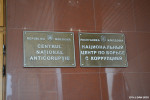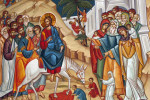
Over 150 objects representing tribal culture can be for the first time admired in Moldova. The National Museum of Ethnography and Natural History is housing a collection of African people’s art mounted with the help of the Belgian collector Marc Van Wesemael, IPN reports.
Deputy director of the National Museum of Ethnography and Natural History Varvara Buzila said that this is an unusual exhibit for the Moldovan public. “It represents the traditional art that some call tribal art. Each item can be considered a separate exhibition. A lot of cultural values were brought together here. These objects were collected during the cultural missions of Mister Marc Van Wesemael. They could have been lost as a result of the impact of globalization, modernization, etc. The tribe chiefs wanted to make their culture known abroad. I don’t know if these chiefs knew were Moldova is, but we are now able to communicate with them through these masks and objects with spiritual value,” she stated.
For his part, Marc Van Wesemael said the life of collector is exciting and it is important to know the culture of every country we are visiting. “We find the culture in artistic objects, in the traditional art. The largest part of the collection comes from Zambia and Congo. The people who live on the banks of the Congo River call themselves cousins between them. Many of the exhibits derive from that region as well as from Tanzania and Zimbabwe. The Africans are embarrassed to show their culture to the Europeans. They fear they will be considered wild. I think this feature makes them special and integrates them into this cultural unity,” he stated for IPN.
“We are happy to see our culture here, in Moldova. We are proud of this,” a tourist from Mali has told IPN. “I saw a mask representing fertility – a woman who holds a child in her arms. In my region, the woman from the mask is standing. Here she is sitting. The women who cannot have children confess to this mask and become involved in charity. They afterward get pregnant. Each mask has a special significance.”
Marc Van Wesemael donated a Moldovan mortuary carpet dating from the second half of the 19th century to the National Museum of Ethnography and Natural History. The carpet was woven according to a simple technique, but is value resides in its durability. It is transmitted as the legacy of four generations. The carpet belonged to the Marza family from Ignatei village, which was deported to Siberia in 1949 and returned to Moldova in 1958.
The exhibition will continue until September 7.












